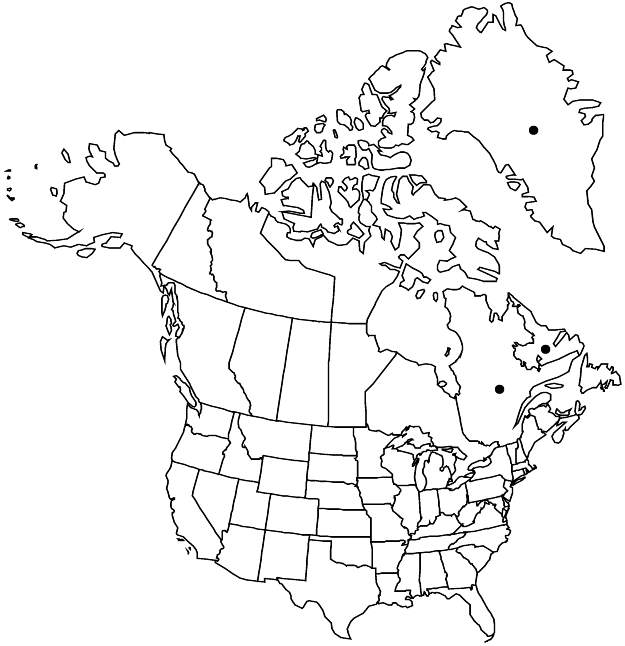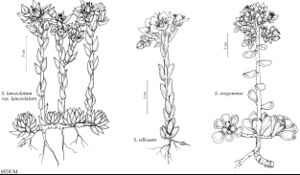Sedum villosum
Sp. Pl. 1: 432. 1753 ,.
Herbs, biennial, rarely annual or perennial, multi-stemmed from base, hirtellous and glandular-hairy. Stems erect, much-branched, bearing basal rosettes. Leaves alternate, ascending, sessile; blade pea green, not glaucous, elliptic-oblong to linear, semiterete with flattened adaxial face, 3–8 × 1.4–1.9 mm, base short-spurred, not scarious, apex obtuse. Flowering shoots erect, simple or branched from base, 2–10 cm; leaf blades elliptic-oblong to linear, base short-spurred; offsets not formed. Inflorescences dense to congested corymbs, 3–10-flowered, 2–3-branched; branches not recurved, not forked; bracts similar to leaves, smaller. Pedicels 3–8 mm. Flowers 5-merous; sepals erect, distinct, green speckled with red or dark purple, lanceolate or ovate-elliptic, equal, 2–4 × 1–1.5 mm, apex obtuse, (glandular-hairy); petals stellately spreading, distinct, pink-red with darker midvein area abaxially, elliptic-ovate, not carinate basally, 3–4.5 mm, apex acute, (rarely glandular-hairy); filaments white; anthers red; nectar scales red, reniform or subquadrate. Carpels erect in fruit, distinct, bright yellowish green turning dark wine-red. 2n = 30.
Phenology: Flowering summer.
Habitat: Wet places and seepages, streamsides, south-facing slopes
Elevation: 0-1400(-3000) m
Distribution

Greenland, Nfld. and Labr. (Labr.), Que., Europe, n Africa, Atlantic Islands (Iceland).
Discussion
Sedum villosum, a calcifuge, is native in western, central, and northern Europe (Iceland to Lithuania and Poland) and is disjunct in eastern Canada (islands of the Gulf of Saint Lawrence) and Greenland. R. T. Clausen (1975) suggested that it might have arrived in the Gulf of Saint Lawrence as seeds in floating pieces of ice from the shores of Greenland or Iceland.
Selected References
None.
